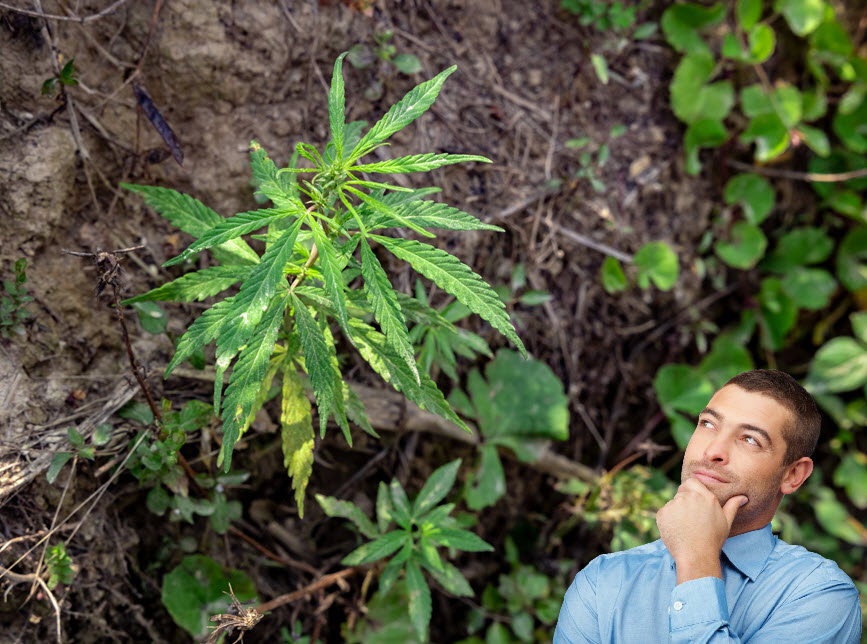
Finding OG Ditch Weed and Why It Matters
https://www.smithsonianmag.com/science-nature/new-study-suggests-cannabis-wild-ancestors-likely-came-china-180978201/
When you mention “pit weeds” you are likely thinking of some arid grass that you find grown on the side of the road. Other people call it “pit weed” – wild weed.
But how wild is pitwort really? The truth is, not so wild anymore.
This is because modern farming methods cross-pollinate really wild weeds, creating a kind of “ditch hybrids”.
Because of this, there are many researchers currently looking for the OG Ditch Weed, or the “really wild” cannabis strains out there that are untouched by modern industry.
Why?
The purest strains of cannabis can help researchers understand / and combat diseases affecting the plant and better understand the genome of cannabis.
Researchers found news that every stoner knows
If I asked you where weed comes from, most of you would probably suspect “Asia”. This is because most of the literature on cannabis suggests that it originated somewhere in “Southeast Asia”.
Nowadays they believe that it is more like modern China. The researchers found that the Chinese cannabis strains have more in common genetically with wild weed.
As mentioned earlier, Ditch Weed’s “OG-est” would give growers a whole range of tools to selectively grow traits and create new strains.
How do you know it’s from China?
To find out where and when weed was originally domesticated, it took the researchers about four years to put together a detailed group of 110 different cannabis strains from around the world.
The researchers then sequenced 82 brand new genomes, which they then combined with 28 genomes already publicly available.
After collecting all of this genetic information, they analyzed the data to find out how related the plants from around the world were. It turns out that the plants from China were most closely related to the wild ancestors.
The researchers also found that this so-called baseline of cannabis split off from the more domesticated strains today, and that the psychoactive and fibrous cannabis strains only differed from each other around 4,000 years ago. The initial stages of cannabis domestication are at a time and place that is already known as the hotbed of agricultural innovation – where modern crops such as rice, gorse and foxtail millet, soybean, foxnut, apricot and peach came onto the market. – Smithsonianmag
In other words, they found a third “strain” that is not “hemp” or “marijuana”, but something that is more like the pre-human manipulation of “wild cannabis”.
Yet even this “third lineage”, as they call it, is much closer to the “wild strain of cannabis,” but the researchers concluded that they are still viewed as “wild” rather than truly “wild”.
The difference between wild and wild cannabis is that wild cannabis was once domesticated and then began to develop on its own in the wild.
Let’s say you dropped a seed from a weed that you once smoked, and that seed germinated and went through a full life cycle, produced seeds by changing its sex, or was pollinated by another plant – and so survived in the wild .
However, after much sequencing, these researchers believe that a really wild lineage may be extinct – considering that we are discovering new creatures and things every day, there might still be a really “wild cannabis lineage” somewhere in the world.
However, while the OG Ditch Weed could be lost due to modern cultivation techniques, the research also yielded 82 new sequenced genomes that it makes publicly available.
But this is just the beginning – the truth is, there is a lot more to discover than Nolan Kane, a plant geneticist at the University of Colorado who was not involved in the work;
“This additional genomic data is a phenomenal resource that greatly expands our existing knowledge … There really weren’t a lot of publicly available sequences from many of the countries they sampled – I’ll certainly download your data and re-analyze it.”
More importantly, says Kane, there could be some research gaps. For example, there are no samples from Russia – which has vast territory and no rich history of cannabis cultivation. Ancestral tribes could possibly be found within these regions.
There are also no samples from Afghanistan, Mexico, and numerous other prominent locations with a rich history of cannabis production.
Of course, it is impossible to start a study on “global cannabis” and so the efforts of these researchers should be welcomed.
What the cannabis industry should do
What the researchers did in this study was to provide some significant insights into the history of cannabis that allowed us to paint a clearer picture of our past.
However, they also bring a number of new sequenced genomes to the table that will no doubt have implications for medicine, recreational cannabis, and more.
The cannabis industry should take this into account; “Fund more of this research effort” to level the playing field with cannabis research.
The Feds only fund the worst kind of research
If you wanted to find out if blowing smoke into a dog’s anus would cause cancer – the government would likely fund it.
Why? Because 95% of their funding, when it comes to cannabis, is specifically geared towards finding the harms of use.
While privately funded research would never be “accepted” as “legitimate” by the authorities. They have “right channels” for things like that.
However, if you were trying to prove that cannabis had a positive impact on the patient’s perceived pain, authorities would shut it down if it didn’t fit their current narrative.
For this reason, it is important to fund “actionable research” where you can easily use the results to achieve a specific goal.
For example, something like sequencing these genomes would give the appropriate group of people enough insight to amplify the desired traits and combat disease and other potential risks to a developing cannabis plant.
This would mean that even if the FDA or whatever other “regulator” wants to say about cannabis is irrelevant. If you can take action without their consent, you win!
Nonetheless, the findings in this paper will definitely shape the cannabis industry for years to come.
THROW SEEDS ON THE STREET READ MORE …

WHAT DOES THE GOVERNMENT OVERTAKE? READ THIS!

Post a comment: